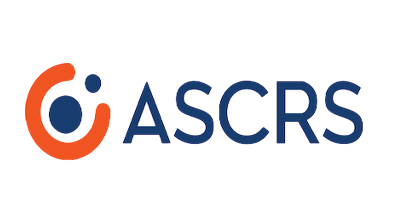
Patient Procedures at Mountain View Eye Center
Cataract Surgery
A cataract is the clouding of the eye’s natural lens and for most people, cataracts are part of the aging process. They can also be caused by an injury to the eye, a disease process, medications, or even longterm exposure to sunlight. Not all cataracts require surgery. However, if the cataract is causing blurred vision and difficulty performing daily tasks, it is time to consider surgery. During cataract surgery, the cataract (cloudy lens) is removed from the eye and replaced by an Intraocular Lens (IOL) or artificial lens.

Procedure Benefits
- Highly customized treatment using advanced 3D imaging
- More precise treatment
- Gentler and easier cataract removal with less ultrasound energy
- More options for astigmatism correction
Decision To Treat
In most cases, cataracts are easily treated with a simple surgery. We only recommend surgery when your symptoms interfere with your activities of daily living, and only you and your surgeon can determine if surgery is right for you. We recommend you schedule an appointment with your ophthalmologist to evaluate your cataracts.
Summary Of Procedure
When you schedule your cataract evaluation, your doctor will perform a comprehensive eye exam to determine if you are a good candidate for cataract surgery. Next, you and your surgeon and our helpful staff will go over your surgical options and any recommendations or preferences for your visual outcome. The surgery scheduler will help you pick surgery dates and will schedule you for the IOL measurements and preoperative physical.
All of our cataract surgeries are performed at Fairbanks Memorial Hospital. On the day of surgery, the hospital staff will prepare you to see your surgeon and administer local anesthesia. Your surgeon will perform the surgery by making a tiny incision in the cornea and using a phacoemulsifier to break down and remove the cataract, then inserting a new artificial lens in its place. The recovery time for this surgery is minimal, and most patients are able to quickly return to their normal daily activities. Cataract surgery has a very high success rate and low risk for complications.
Optiwave Refractive Analysis (ORA)
What Is ORA?
The ORA System™ is a sophisticated device that allows your surgeon to take measurements of your eye in real time during your cataract surgery, allowing for much more precise measurement and alignment of your intraocular lens than is otherwise possible. It drastically improves your chances of not needing glasses after cataract surgery, especially if you have astigmatism. Your doctor can assess the quality of your vision during the operation to assist in optimizing your results, rather than waiting weeks to determine the accuracy of your outcomes.
Is ORA A Good Idea For Me?
Only you and your surgeon can make that decision. If you have existing eye disease that will significantly affect your vision after cataract surgery, such as diabetic retinopathy or advanced corneal scarring, ORA may not be right for you.
What Does ORA Look Like?
Watch the video below for a quick preview of the ORA System™!
Preparing For Cataract Surgery
Your Cataract Evaluation
If you’ve scheduled a cataract evaluation with our office, you’ve taken the first step toward better vision. Cataract evaluations are usually 2 to 4 hours long, depending on your ocular conditions, mobility, preparation, and length of discussion with your physician and the surgery schedulers. Your eyes will most likely be dilated, so you may want to bring someone to drive you. We recommend you bring a loved one with you anyway, as many find it easier and more comfortable to decide on a surgery if they have someone present who knows them well and can help coordinate their needs before and after their surgery.
Cataract surgery, in most cases, is a very simple and easy procedure. That said, it’s still a surgery, so there are definitely some things you can do to help us make your experience easy and stress-free. You don’t have to do any of them (except maybe Step Three!) but we recommend you do as many as you find convenient to save yourself some time on the day of your appointment.
How To Prepare
Step One
If you haven’t done so already, we recommend you read about cataract surgery and your options. You can also get more information about the specific surgical packages here.
Step Two
Think about whether you might want refractive cataract surgery. If so, we recommend you stop wearing your contact lenses for two weeks prior to your appointment in order to streamline your measurements. You can’t wear them again until after your surgery. If you aren’t sure or don’t want to be inconvenienced without knowing if you should get refractive cataract surgery, that’s alright too! You can wait, and we can schedule your measurements after a two-week period of disuse.
Step Three
Gather up a list of all of your medications, including dosages, and find your insurance cards. You’ll need these the day of your appointment!
Step Four
Prepare for your appointment in advance by filling out your new patient paperwork and/or your surgical questionnaire. You can find those here.
Step Five
Watch the following informative videos from the American Academy of Ophthalmology. These videos are specifically designed to supplement your visit with us so you have all the information you need to make an informed decision about having cataract surgery once you’ve spoken to your surgeon. You can save time at your appointment by watching them now!



